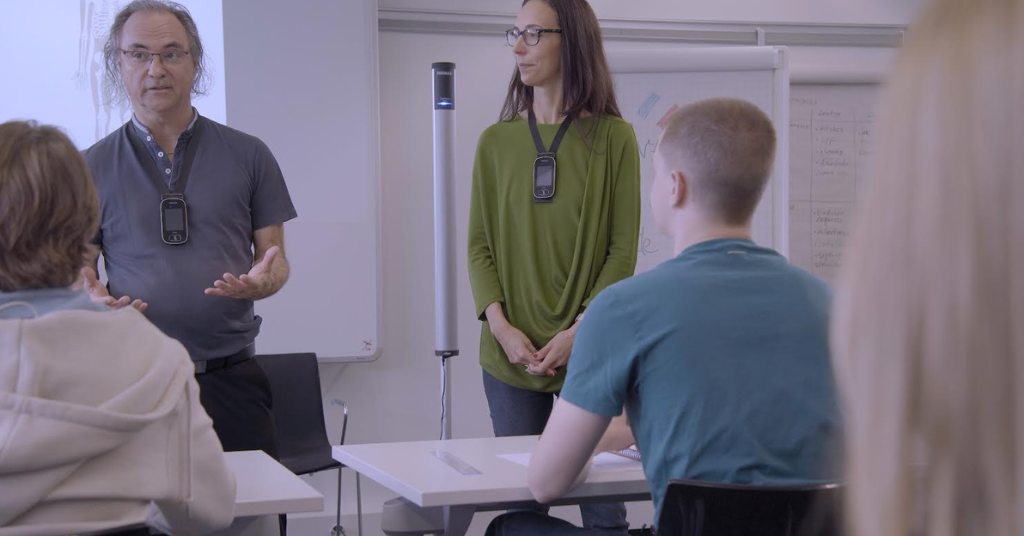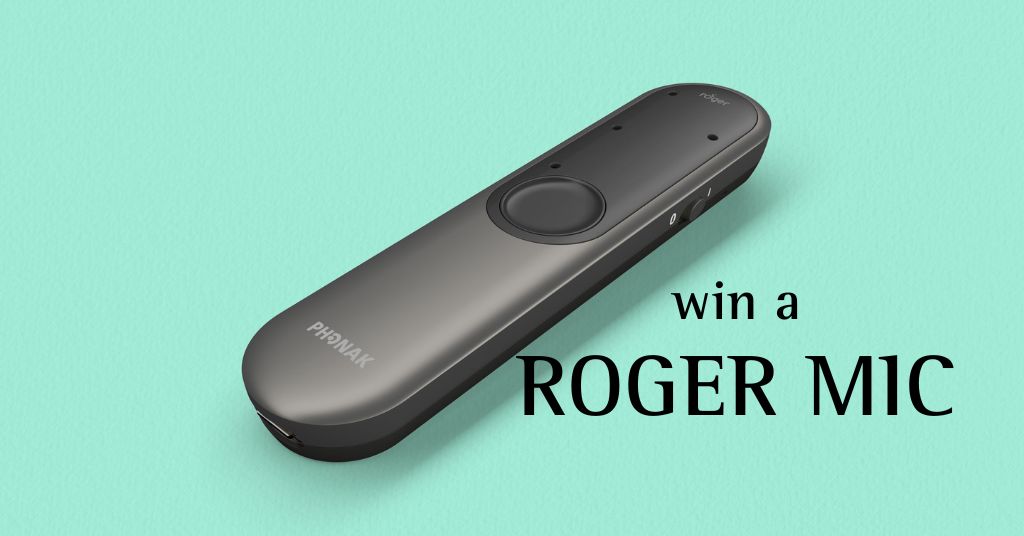
My experience in college with hearing loss
January 7, 2020
How to tell your deaf story for the world to see and hear
January 9, 2020This listening simulation shows why your child should use multiple remote microphones in the classroom

I find one of the hardest things about being a parent is not being able to be a fly on the wall in school to see how my child is doing.
Maybe you feel like me. For many normal hearing parents knowing which questions to ask of your support team and which accommodations are a must can feel out of our grasp.
Hearing is believing!
We may not know the technical terms or product names, but we can use our own senses to evaluate certain solutions. This listening simulation illustrates the noise barriers students can face in the classroom and lets us listen to how different Roger microphone technology can bridge the understanding gap. It’s an eight-minute video that is meant to help frame out solutions relevant for Free Appropriate Public Education (FAPE) for students with hearing loss.
After listening to this simulation, I found myself full of questions. Below are the first six that came to mind.
Are hearing aids enough?
As we saw/ heard in that simulation, the answer is no. Hearing aids, BAHA or CIs are not enough for kids with hearing loss. They spend 40 percent of their day in noise or listening over a distance of six feet or more (Mulla, I & McCracken, W. 2014), having extra microphones to overcome those obstacles help them have clear access to speech signals from peers, teachers, and multimedia.
Are all remote microphones the same?
When my oldest child was fit with her first pair of hearing aids, the audiologist told us that “when she gets to elementary school, there will be additional microphones the school will provide to be sure she has full access to the lessons.”
I really didn’t have space in my brain to begin to question what that meant. Later, I learned this included the whole genre of “FM Mics.” I’ve come to think of using the term “FM” as I think about using the word “phone” to describe my current cell phone. Yes, my cell phone has a function to let me place calls, but when the word phone was first coined, it was to describe something that by today’s standards is quite antiquated. That’s the same with FM. There are a lot of Remote Mic options out there – Bluetooth, Airstream, FM, but none of them compare to digital modulation (DM.)
Due to patents, only Phonak provides DM microphones, or “Roger systems.” Roger systems are adaptive in nature, so as the noise in the environment increases, they can change the way the hearing aid and Roger signals blend together, this keeps the teacher’s voice clearer than the classroom’s background noise.
Another thing we saw in the simulation is that Roger transmitters can be paired together: the teacher speaks into one, peers speak into others, and multimedia transmit through a third. All of these speech and sound signals can blend so our deaf and hard of hearing (DHH) kids can have access to learning the same as their normal-hearing peers. These types of features are not possible in the other remote mics on the market today.
Does my child need to hear other classmates in class?
Recently, I read that Jr. High classrooms, in particular, rely on class discussions more than teacher lectures. This means that one’s peers are sharing knowledge and asking thought-provoking questions. Without microphones for peers to use, students with hearing loss do not have the same access as their classmates do. This could negatively impact their ability to react and share their own insightful ideas, construct a well-thought-out essay, or answer accurately on state testing.
How does my child hear videos and classroom multimedia?
We live in a digital age now. Some of the findings from the 2019 report by Common Sense Media, shows that 58 percent of teachers use video-streaming services for all subjects and conversational topics. I just want to be sure my child can hear clearly during these common teaching methods. So be it hearing the teacher and the video clearly, or the state testing signals clearly, I don’t really care how it’s configured, I just want my child to have the same access. (Says every DHH parent, everywhere.)
There are a few ways to set it up; in the simulation, we saw the teacher wearing the Roger Touchscreen Mic and the Roger Multimedia Hub plugged in, this could be the way for a group video or independent viewing. Or the Touchscreen Mic could be plugged into the media source, like a Chromebook or tablet. But for many hearing loss levels, over the ear, headphones just don’t cut it.
Read more: 3 Phonak classroom resources you should know about
Do I need these transmitters at home?
Our audiologist didn’t tell me when my daughter was two about Roger mics for home. Yes, she did talk about incidental learning. But I didn’t realize how most noise covers up the sounds within the speech banana (Walker, 2018). And in order for our children to develop normal speech like their peers, clear access to sound at home is also critical. Since then, we now use a Roger Select at home. We use it at places like Tap Dance, restaurants, and even in the car. Noise, unfortunately, is everywhere.
What do I do now?
Talk to your child. Ask things like:
When your classmates read aloud, can you hear them?
Do you watch movies in your class? Does your teacher talk sometimes during the movie? What does it sound like? Does it sound different than it does at home?
Talk to the teacher and educational audiologist. Ask things like:
Have you had students use Pass-around Mics or Multimedia Hubs in class; how have you seen it impact their educational outcomes?
Is it hard to get the teacher or peers on board with using technology? What other things can be integrated to help everyone benefit? Do you have sound field speakers in any classrooms, might that help compliance?
Are there any assessments that can be used to determine access, communication, and eligibility to further build the case that my child needs this?
Talk to your audiologist. Ask things like:
Looking at my child’s audiogram and other tests, what types of environments do you think are the most challenging? Are there any programming adjustments needed to help my child hear clearly in the classroom?
Do you have any favorite Roger Mics that you recommend I use from home?
Does our state cover Roger mics under Medicaid?
Are there other funding sources you’d recommend?
And if you belong to parent groups like AG Bell or Hands and Voices, ask local parents for advice. What worked for them? What roadblocks might you face to get more transmitters?
In the spirit of learning together, if there are questions you’ll be asking your tribe, share them below!



